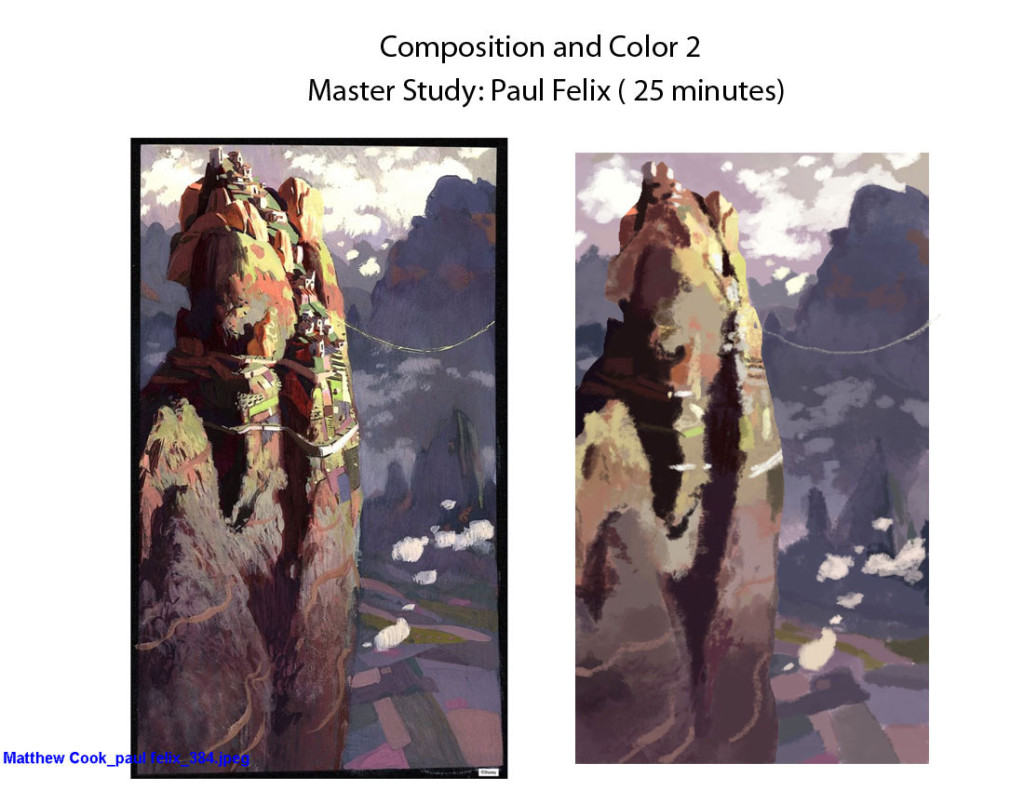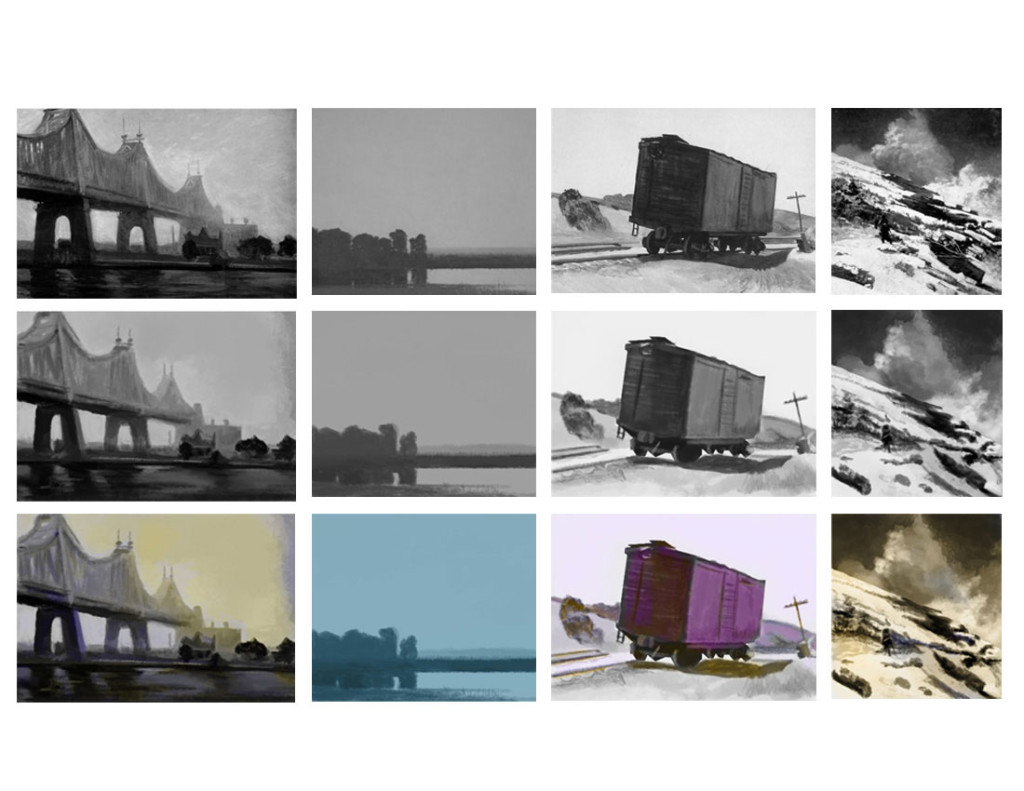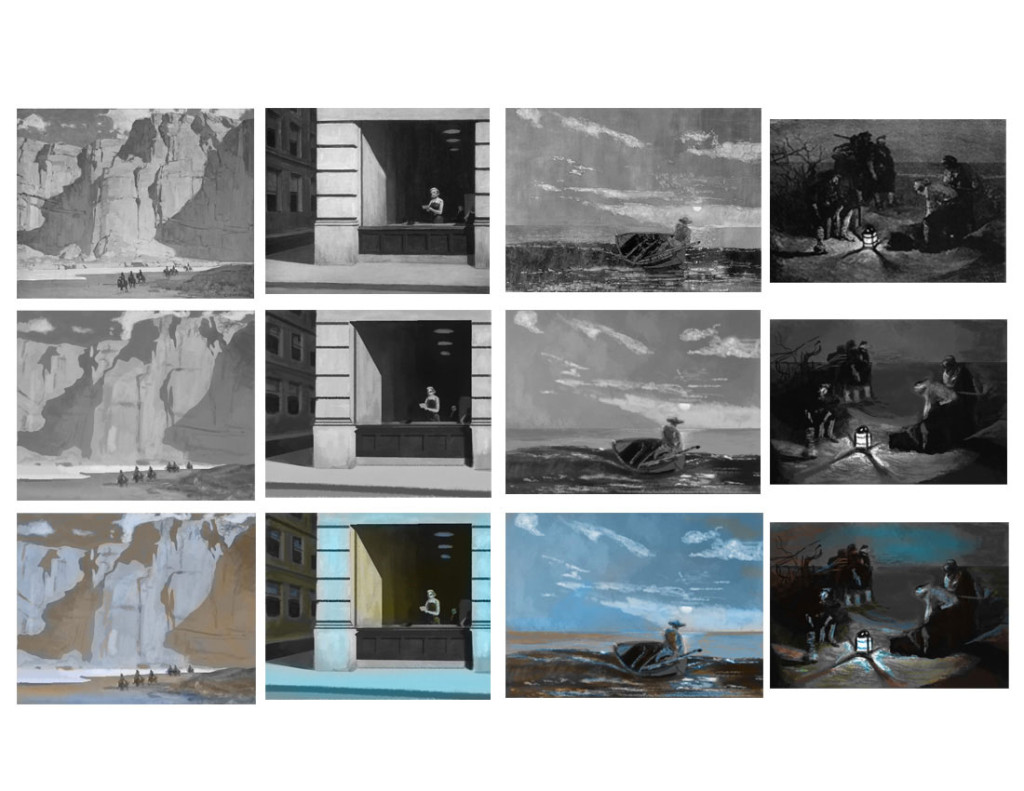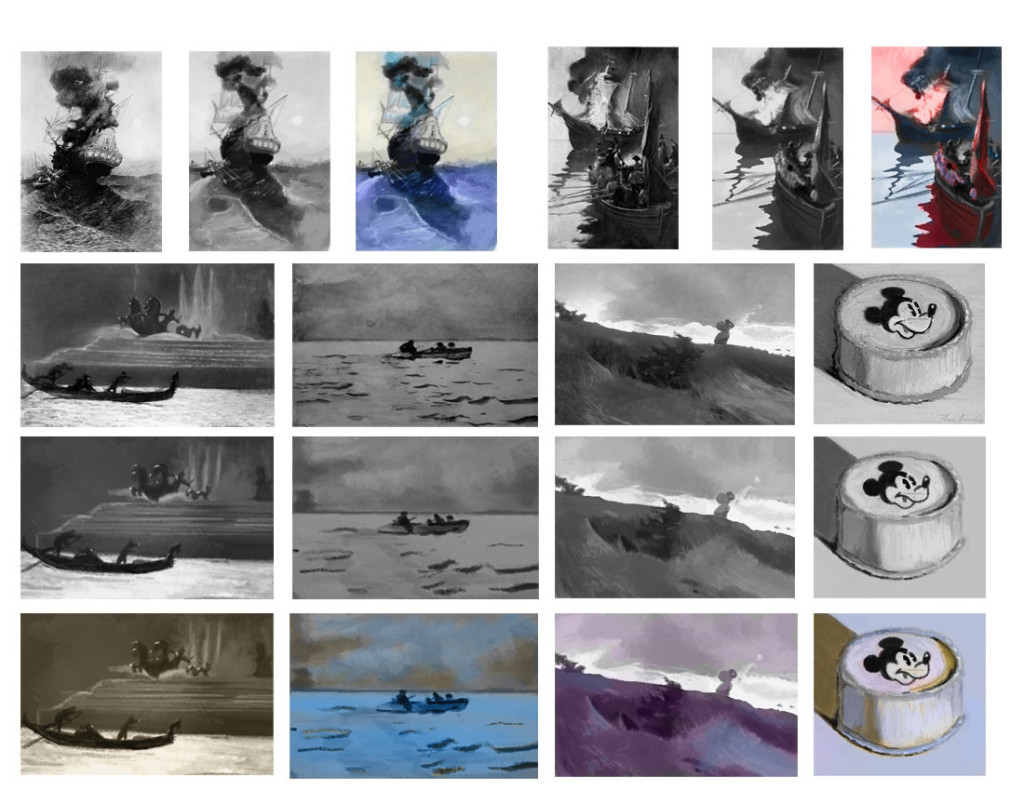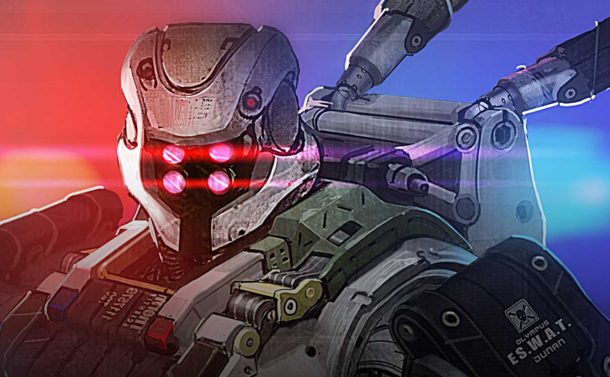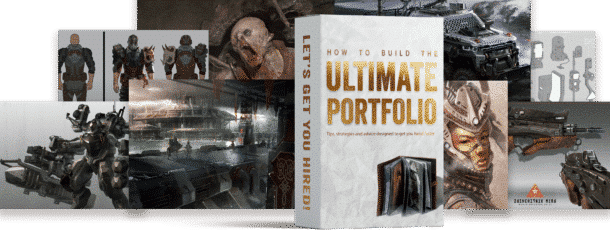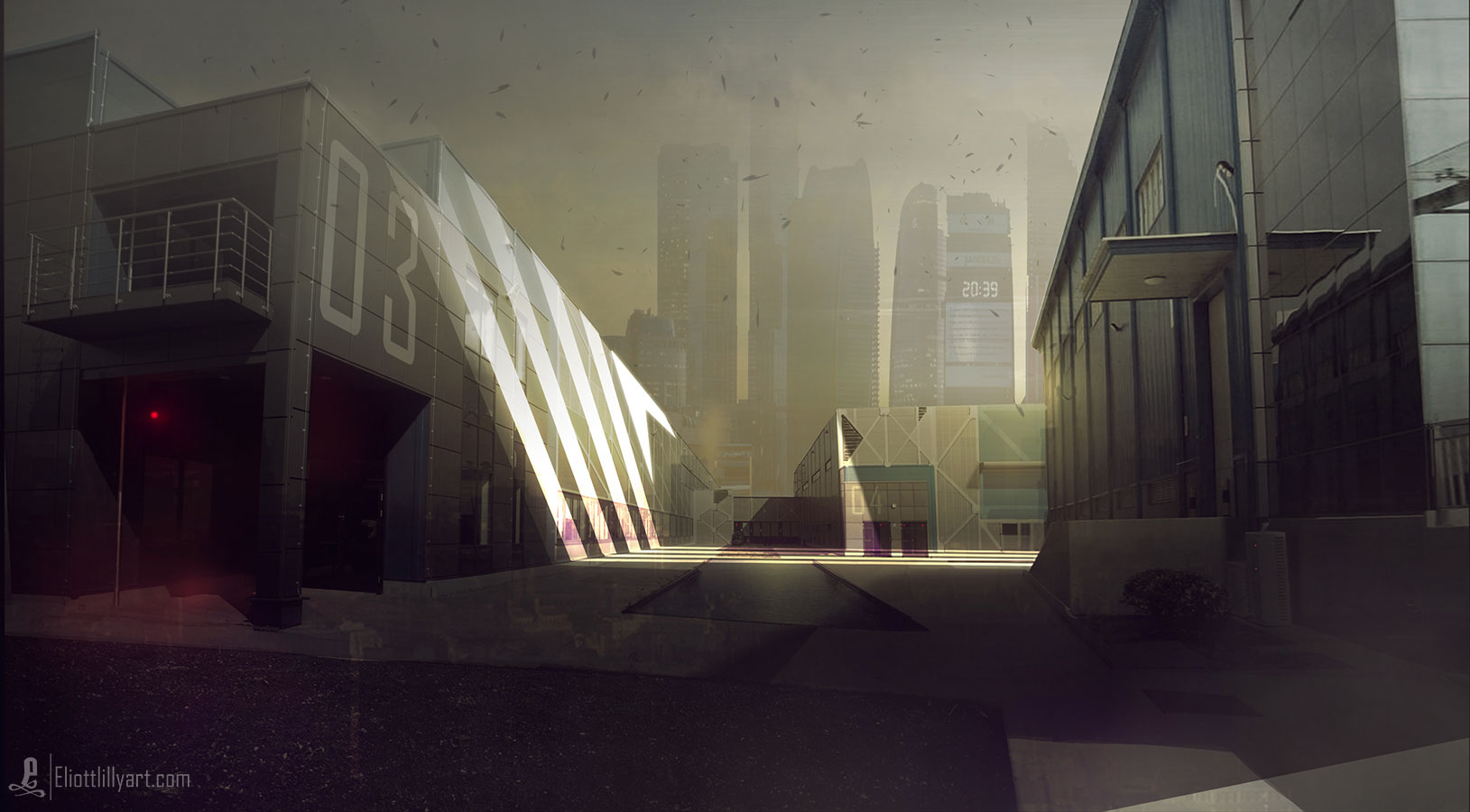
by Eliott Lilly | Jul 22, 2015 | Portfolio Advice, Questions
Here are short answers to frequent questions asked by students, about building a solid portfolio.
Is there a specific genre that is in high demand right now and companies are looking for?
No, and never follow the trends. Because they are just that- trends. They will come and go, and you may miss them entirely. Instead figure out what you love drawing, then find the companies that make those things and get them to notice and hire you.
What should I show in a portfolio? Should I show my specialty or should I show them that I can do everything?
Well, that really depends on how impressive your “specialty” is. If you are really good at that one thing, and have enough images to make a portfolio, then that’s the route I would take. If you don’t, then make more, or go the generalist route.
Would it hurt my chances if I showed something different in my portfolio from what the company is expecting/ looking for in a candidate?
Usually, yes. But there are exceptions. First, you need to know who you are dealing with. If you are applying at a first party studio that only makes one thing, then showing them artwork outside of their niche is probably a waste of time. However, if you are applying to a third party studio who puts out numerous products in various genres, in those cases it might be beneficial.
How polished should the images in my portfolio be?
A good portfolio will demonstrate the full spectrum of design. This means taking the same object and showing the process and progression from rough thumbs, to full color renders where possible. Companies want to see all of the in-betweens because they want to evaluate your thought process and see how you problem solve. That is not to say that you can’t have more fully rendered images than line drawings, but try not to overload you portfolio with one or the other. The goal is to show enough so they get idea that u can produce a lot of ideas very quickly.
If you have questions that are not answered here, leave a comment below, or send a spell checked email to eliott@eliottlillyart.com. It may take some time, but I will do my best to respond.

by Eliott Lilly | Jul 20, 2015 | FAQ, Questions
Here are short answers to frequently asked questions I receive from students about the use of 3D in concept art.
HOW IMPORTANT ARE 3D SKILLS TO CURRENT CONCEPT ARTISTS?
Modeling in 3D is like any other tool: Helpful when used correctly.
While it’s not mandatory or by any means necessary to make good art using 3D tools, having that skill set under your belt is beneficial for lots of reasons such as rapid iteration explorations, interesting shape creation, perspective, happy accidents, etc. etc. etc. As such I highly encourage everyone to learn at least one 3D software program.
HOW MUCH KNOWLEDGE DO I NEED IN 3DS MAX, MAYA OR ANY OTHER MODELING PROGRAM?
At the bare minimum, I recommend you familiarize yourself with the basics, such as navigation within the program, primitive shape modeling, the use of the camera, etc. Learn modeling terms, so you can speak the same language as the people who will have to model your concepts. If you decide that you really like modeling, you can take it a step farther and really dive into the software. For a few bucks, you can purchase several “how-to” tutorials on Gumroad. Check out the recommended resources page for more information.
If you have questions that are not answered here, leave a comment below, or send a email to eliott@eliottlillyart.com. It may take some time, but I will do my best to respond.
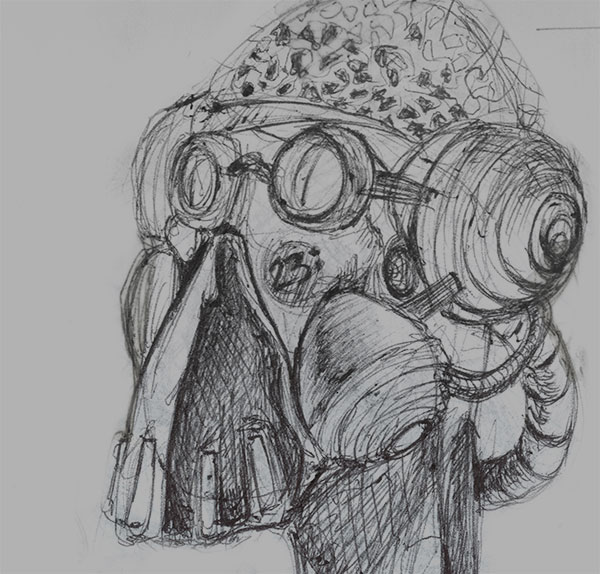
by Eliott Lilly | Jul 13, 2015 | FAQ, Questions
Question submitted by Christian B.
I AM CURRENTLY A JUNIOR IN HIGH SCHOOL THAT WANTS TO GO INTO THE CONCEPT ART INDUSTRY. I WAS WONDERING WHAT I SHOULD BE DOING AND WORKING ON AT THIS POINT IN TIME, AND WHAT I SHOULD DO AFTER I GRADUATE.
Glad to hear that you are want to become a concept artists.
The Big Bad World of Concept Art For Video Games; An Insiders Guide For Students is a guide book for students just like you! It answers ALL of those questions and more. Chapter 1 is an overview of the job, what it really entails and describes what its like to work in the industry. Chapter 2 discusses which schools you should attend, what you should be studying and how to make the most of your education. Chapter 3 talks about the things you should be learning outside of school to cultivate your talents, and Chapter 4 discusses how to build a portfolio to get the job you want in the industry. Chapter 5 offers words of wisdom and insight from some of the leading concept artists in the industry. There’s even a recommended resources chapter in the back of the book to get you started.

So my first piece of advice would be to start reading! You can purchase your copy on Amazon here. If, after reading the book, you still have questions, feel free to drop me a line and ask away.
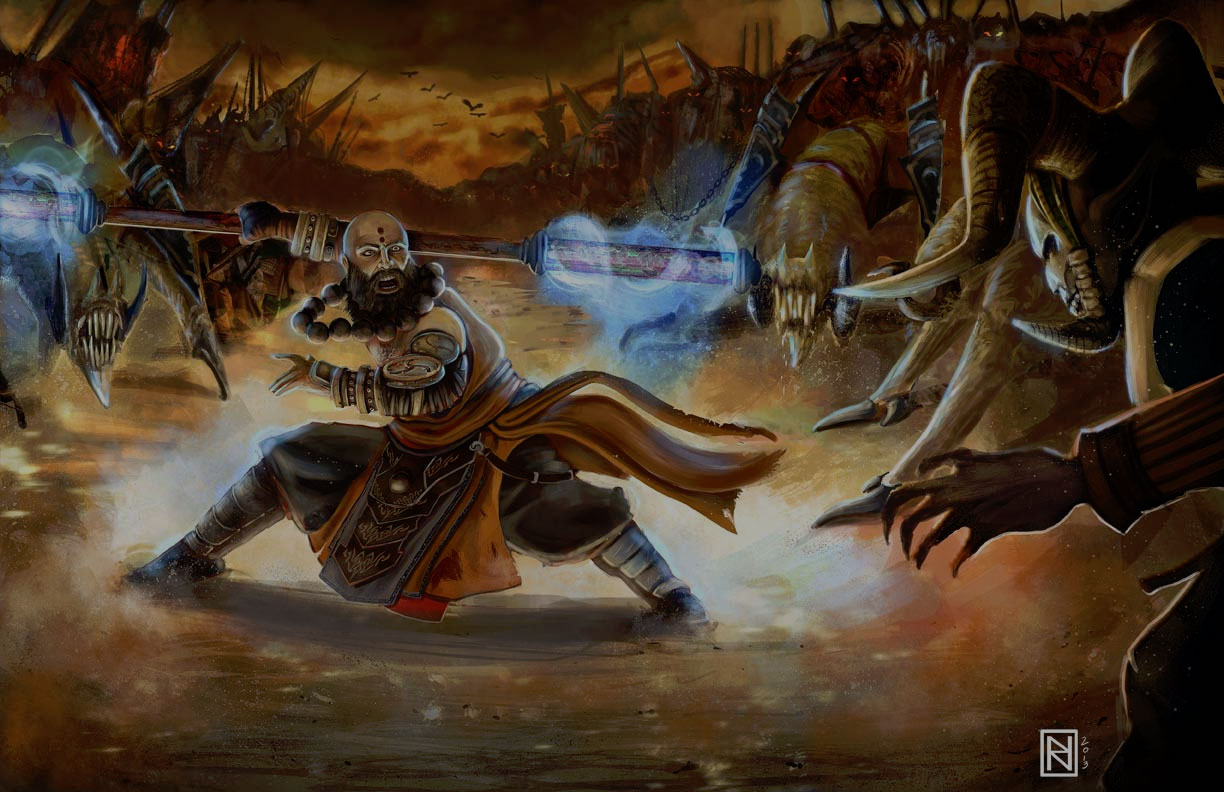
by Eliott Lilly | Jul 1, 2015 | Portfolio Advice, Questions
Question submitted by Michael, Student artwork provided by Hector Ruiz
I DO PRIMARILY DRAWINGS CENTERED AROUND PEOPLE AND CHARACTERS. MY STRENGTH IS VERY MUCH IN THE DIRECTION OF ORGANICS AND NOT MECHANICAL DRAWINGS, AND I WILL ALWAYS BE BETTER AT ORGANICS, IT’S A SIMPLE TRUTH. I HAVE NOTICED AMONG ARTISTS, YOU ARE REALLY GOOD AT ONE OR THE OTHER, SELDOM BOTH, THOUGH IT DOES HAPPEN. SHOULD I EXPAND MY SKILL SET TO INCLUDE OTHER THINGS, LIKE MECHANICAL AND ENVIRONMENTS AND SHOW THOSE TOO, OR SHOULD I CONCENTRATE ON WHAT I AM GOOD AT AND SHOWCASE THAT IN MY PORTFOLIO? WHAT IS IT THAT THE INDUSTRY LOOKS FOR IN AN ARTIST THAT SPECIFICALLY WANTS TO BE A CHARACTER DESIGNER?
Hey Michael, thanks for writing in. Here are my comments:
“…AND I WILL ALWAYS BE BETTER AT ORGANICS, IT’S A SIMPLE TRUTH…”
Saying that you will “always” be better at one thing over another may mean that you are very focused in your choices and have honed in on the thing you like drawing the most. If that’s the case, then Kudos there. Just make sure that your organic designs, forms and volumes are immaculate.
However, as a professional who has seen hundreds of student and professional portfolios, I find that in most cases people who are “better at organics” tend to be those who are less comfortable with perspective. I’m just guessing here, but this is the more likely of the two scenarios.
Regardless, the truth remains: You can’t have an understanding of organic shape and form without an understanding of perspective. So if you suck at hard surface designs, perspective. etc, then my first piece of advice would be to practice those skills. Then practice some more!. Your designs will thank you for it as they can only improve.
“…I HAVE NOTICE AMONG ARTISTS, YOU ARE REALLY GOOD AT ONE OR THE OTHER, SELDOM BOTH…”
That’s a bit of a generalization. There are usually SEVERAL things that a person is good at drawing, each of which borrow from a similar skillset. For example; if you are comfortable with characters and anatomy, you may also be comfortable drawing portraits, creatures, monsters, etc.
Likewise, if you are comfortable with perspective, then you can probably design hard surface things like props, weapons, or even vehicles and/or environments. Keep in mind that being good at only ONE thing, limits your marketability, flexibility and in turn, value to a potential company.
“…SHOULD I EXPAND MY SKILL SET TO INCLUDE OTHER THINGS, LIKE MECHANICAL AND ENVIRONMENTS AND SHOW THOSE TOO, OR SHOULD I CONCENTRATE ON WHAT I AM GOOD AT AND SHOWCASE THAT IN MY PORTFOLIO?”
Normally, when taking the “specialist” route, I would say master only the things that you are good at, but being a character artist is a bit different. The reality is that being a character artist is THE MOST sought after job and thereby the most competitive field in the video game industry. There are way too many candidates to fill the few jobs available for this position. Therefore, if this will be your main focus, then you will need to be AMAZING at it.
As a fall back, I often encourage character artists to expand their skillset when possible. This usually starts with perspective and hard surface designs, but can be anything else that will diversify your portfolio. Again, it’s all about adding value to you as an artist, so that if a client isn’t impressed with your character work, they may still have a job for you doing something else.
“WHAT IS IT THAT THE INDUSTRY LOOKS FOR IN AN ARTIST THAT SPECIFICALLY WANTS TO BE A CHARACTER DESIGNER?”
If you want to solely be a character designer, it would help to show a few examples of things like these in your character portfolio:
- Unique design aesthetics: (What design language do you develop throughout your figure and how consistent is it?)
- Artistic Style: (How do you render your figures? Are they cartoony? Realistic? Stylized?)
- Character attitude/ personality: (How well do you convey personality in your designs? Facial expressions, posture, and stance all play a part here).
- How well do you know your subject matter? (Is the character believable? Are the designs grounded in reality or totally fabricated? What creditability do your designs have?.
- Fresh design approach on an old subject matter: How do YOU tackle an established Pop culture icon? Intellectual property, etc.
I hope that helps. See: The Big Bad World of Concept Art For Video games; An Insider’s Guide For Students, Chapter 4: The Portfolio (page 79) for more specifics on building your portfolio.

by Eliott Lilly | Jun 23, 2015 | FAQ, Questions

Concept artist James Paick and Hector Ruiz share an insight into what is like to have color blindness in art and how to work around it.
Question submitted by Gary
I’M 18 YEARS OLD AND I LOVE DESIGN, DRAWING, ART, STUFF LIKE THAT…BUT I’M COLORBLIND. SOMETIMES I MISTAKE A YELLOW COLOR WITH A LIGHT GREEN COLOR, RED WITH BROWN, ETC. I REALLY LOVED DRAWING WHEN I WAS YOUNGER, BUT I KIND OF LOST MY PASSION WHEN I FOUND OUT ABOUT MY CONDITION. MY QUESTION IS, CAN I BE A CONCEPT ARTIST IF I’M COLORBLIND?
Hey Gary, it took me some time to ask around and get an answer for your question. To my surprise colorblindness is more common in the industry than you think. While I am not color blind myself, I now know of several artists who are and who have first-hand experience dealing with this issue. So, instead of listening to me… listen to them.
I sent your question to Hector Ruiz who assists me with the Big Bad World of Concept Art website and who, despite being partially color blind himself, is still a professional illustrator . Here’s what he said:
Hey Gary,
First of all, never lose your passion because of a disability. Do not get me wrong, living with a disability certainly comes with some challenges. For example, if you are unable to find work because of your disability, managing your finances can be incredibly tough. That being said, if you are struggling to make ends meet, then you might want to do some research into disability insurance.
Essentially, disability insurance is a type of insurance that can provide income in the event that you are unable to work due to a disability. The actual disability insurance cost can vary depending on your disability insurance provider, and therefore doing plenty of research is strongly recommended so that you can find the best disability insurance policy for your specific needs.
However, did you know that some of the greatest figures in history overcame their disabilities in order to pursue their true passion? Check out people like Thomas Edison or Albert Einstein. Color blindness is only small bump on the road, considering there are artists like John Bramblitt who successfully make a living selling paintings while not having any sight. Crazy, right?
The way I see it, if you have a passion for something, you will find a way to do it. I found out at an early age that I was color blind. Kids in my class would make fun of me because I colored things the wrong way. I didn’t care because I could still draw better than anyone in class. In high school I came up with excuses to how I chose colors, and this seemed to work fine, even throughout college.
When game/film art became my focus of learning, I realized that I could not come up with a fine arts approach to “cheat” the system. I came up with different techniques. I asked my wife for help, used Photoshop’s eye dropper tool, worked with Photoshop filters, and even made color swatches out of master paintings or Google pictures. By the way, the last things I mentioned are a great way to learn about working with colors. Take a master painting. Study it, color it, make swatches out of it. It’s not as easy at times and sometimes it takes a little longer in completing things but you get used to it. After a while, you start to develop a system to make things work.
If color still gives you trouble, then you could always explore corrective eye surgery with somewhere like SharpeVision. Modern eye surgery can fix all sorts of eye issues these days. Alternatively, you now have an opportunity to work on things with value (black/white). There are many artists who do well creating masterful pieces with value. If you’re really good, a company can hire someone else who will take care of the color. I’m almost positive it would work similarly with college. A lot of people can draw. The trick is to know how well you can design something. If school denies you access, you are in an age of technology where almost everything can be found online. I had great art teachers who were self taught. Check out our resource’s page where you can find a few things to get you started, and good luck.
Here, are a few color exercises that I had to do while in school. I hated them because my teacher would make me do them multiples times until I could understand color better.
I also sent your question to James Paick, a professional concept artist and instructor who is also partially color blind. He says:
You can definitely design, and learn to become a great concept artist, even without the use of color.
One question is: Are you fully colorblind, or only with certain color spectrum?
The beautiful part of the world of design is design translates in Black & White OR in color. Some of the best designers in the industry are people who draw & paint in black and white.
One of my top instructors from Art Center was actually full color blind I believe, as well as my classmate Tyler West: http://www.weststudio.com/
I would highly recommend checking out artists such as Marcos Mateu-Mestre & Robh Ruppel
Both their books – Framed Ink & Graphic LA are amazing, with either minimal or the absence of color!
And there you have it. Straight from the PROs.
IF ANYONE WANTS TO LEARN MORE ABOUT COLORBLINDNESS, CHECK OUT THIS PRESENTATION THAT HECTOR PUT TOGETHER
ColorblindPresentation

by Eliott Lilly | May 28, 2015 | Portfolio Advice, Questions
Question and Art Submitted by: Evan Fein
HOW CAN SOMEONE WHO LOVES DRAWING, BUT WHO DOESN’T HAVE ANY VIDEO GAME DESIGN PROJECTS IN THEIR PORTFOLIO, CONVINCINGLY SHOW THEY HAVE THE SKILLS TO WORK IN THE FIELD? CURRENTLY, I HAVE HUNDREDS OF PAGES OF CAR AND VEHICLE DESIGNS IN MY SKETCHBOOKS, BUT 95% OF THEM DON’T MAKE IT PAST THE DRAWING PHASE. DO I NEED TO WORK ON A PERSONAL PROJECT, DESIGNING A COHESIVE WORLD WITH CHARACTERS, ENVIRONMENTS, AND VEHICLES IN GREAT DETAIL? OR WOULD MY TIME BE BETTER SPENT DESIGNING A WIDE RANGE OF DIFFERENT CONCEPTS, BUT NOT GOING INTO MUCH DETAIL WITH EACH ONE?
The good news is that you don’t have to have “concept art work” to get a job in the concept art industry. You only need to have a passion for drawing, and an ability to problem solve and communicate. To show that you have the skills to deliver the work studios will demand, you simply need a portfolio. And in your case, its sounds like you should build your portfolio around vehicles. When building your portfolio it doesn’t matter whether you make a series of images in a personal project that are strung together in a loose narrative, or a bunch of random images. What DOES matter is that whatever you draw, you knock it out of the park.
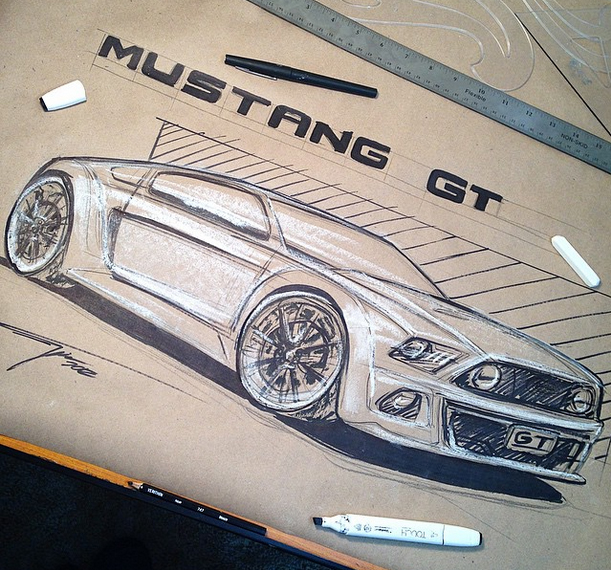
You can “knock it out of the park” in 2 ways: with quality of your designs (how “cool” it is, how believable, creditable, etc) and how well you execute your idea (how well you can convey that idea, the attention to details, etc). So. Here’s what your portfolio should do to demonstrate the quality of your designs.
- Each image should vary from the next, with each vehicle varying in shape, form and design. (Don’t draw the same vehicle over and over)
- Have a few examples of real world, modern, retro cars/ vehicles (to show you know your stuff)
- Showcase your own vehicle creation abilities, futuristic vehicles, etc. (To establish that you can apply common design principles to any vehicle)
- Demonstrate your ability to design vehicles with an intended purpose ie: civilian transport, race car, etc. (To show that you can adapt your thinking to whatever a studio may need)
Here’s what your portfolio should do to demonstrate that you can execute on your ideas.
- Display cars by themselves against a neutral or simple background
- Display motion action shots (driving, jumping cliffs, crashing, etc– Basically, anything you see cars do in video games).
- Have a variety of images that showcase your process. (It’s good to include a few sketches, but with the bar on visuals so high, you really want to show that you can finish a design and take it to the polish level.
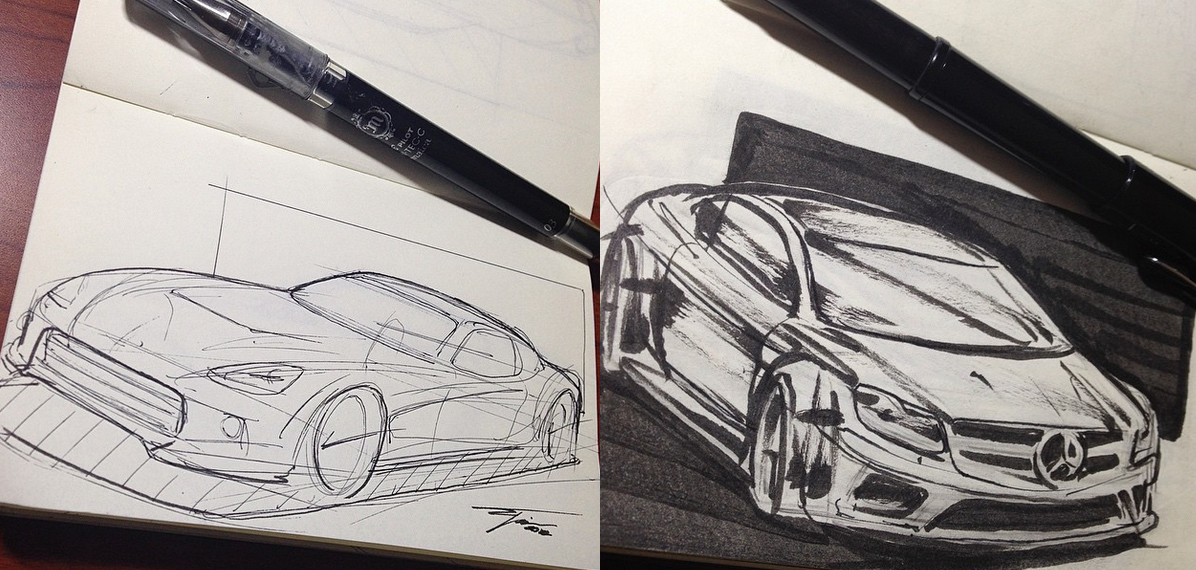
Because it’s very expensive for game studios to acquire the licensing rights to use real world cars, a person who can concept these vehicles will be in high demand for studios that need that sort of thing. If you can find those studios, you will be set. (Checkout EA or Rock star – they always need cars)
Here are some vehicle artists who do it really (really) well. I hope their artwork inspires you and gives you an idea of where the “bar” is at.
- Daniel simon has masterful sleek and sexy vehicle designs. http://danielsimon.com/cosmic-motors-vehicles/
- Khyzyl Saleem takes car customization to the extreme. http://www.artstation.com/artist/khyzylsaleem
- Alexey Pyatov focuses heavily on military vehicle design. http://www.artstation.com/artist/karanak
IF YOU HAVE QUESTIONS YOU WOULD LIKE ANSWERED, SEND AN EMAIL TO ME@ELIOTTLILLYART.COM








